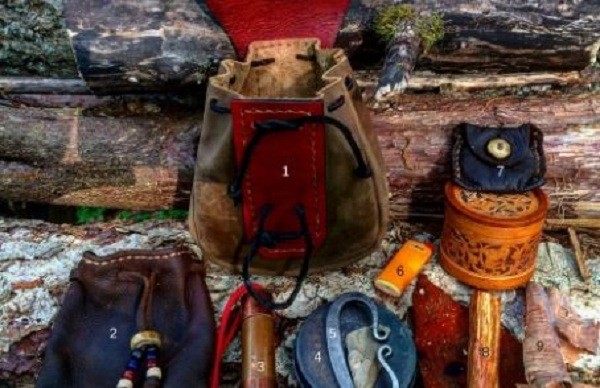A preppers job is to be prepared for just about any situation that may come up. This is why it is a good idea to have more than one bug out bag or kit. This way you don't risk losing all supplies.
It is also vital to your survival to carry some bug out supplies in a belt around your waist, so you'll always have supplies where they can be easily reached. You never know when this bug out belt could be the only thing standing between life or death!
How To Make And What To Include In A Bug Out Belt:
Belt Kit Items
First, let’s look at the ring belt itself. To make your own, use a leather belt blank which measures about 20 inches longer than your normal belt. Attach a ring or D-ring and your set.
To tie a ring belt, thread the end through the ring around your waist. Run the end under the belt from the bottom creating a loop. Pass the end back through the loop and cinch tight. If you don’t have a ring belt, traditional belts will work. However, one advantage of ring belts is their ability to be worn over heavy winter clothing for easy access to frequently used tools in the field.One alternative use for the leather ring belt is a strop for cutting tools. Loop the belt around a tree and pull tight. Strop your knife by moving the blade up and down the leather with the cutting edge facing the opposite direction of the stropping motion.
Knife
Arguably one of the most important tools for outdoor self-reliance, a sharp knife is essential.Fire Kit
The contents of my fire kit pouch consist of multiply methods to burn sticks.Bic Lighter – open flame ignition
Flint and Steel – spark ignition
Tonteldoos (Tinder box) – redundant spark ignition
Magnifying Lens in a birch bark container with a small bed of dried natural tinder – solar ignition
Char Container with charred material – next fire kit
Small piece of Fat Lighter’d – the best natural fire starter in south
Sure Fire material – commercially made fire starter that will burn floating in waterFerrocerium Rod and Folding Saw
I found a one-dollar leather sheath which was used to hold screw drivers and re-purposed it to hold my Bacho folding saw and large ferro rod. A carabiner connects the sheath to my belt. A pair of leather work gloves also hang from the carabiner.For a handle on my ferro rod, two feet of one inch Gorilla Tape is wrapped around the end of the rod with a loop of paracord taped into the wrap.
Sidearm
I carry a sidearm in the woods and everywhere legally allowed.Pocket Stuff
I carry a Swiss Army Knife, chap stick, and a mini Bic lighter in one front pocket. My truck keys are in the opposite pocket with a spare ferro rod attached. My wallet is in my back pocket. Yes, my wallet contains survival items like duct tape. My cell phone rides in the opposite pocket. Even without cell service in the hinter boonies, the camera feature is invaluable to me in documenting my adventures.Canteen Kit
I can attach my 32 ounce canteen kit to my ring belt if necessary. However, I prefer wearing it over my shoulder with a paracord shoulder strap for emergency cordage. The front pouch of the carrying case has redundant fire starters, an EmberLit stove, and an eating utensil.
A bug out belt kit can be very important to your survival if you lose or get separated from all of your other supplies. It is important to always have a knife in it because you never know what you might need to cut to get yourself out of a tricky situation.
You should also include several ways to make a fire so you can stay warm, cook food or even signal for help. Having a weapon is important too because you never know if you have landed in some animal's territory. A bug out belt kit can help any prepper out no matter what happens.
To find out more about bug out belt kits, go to Survival Sherpa.
Featured Image via Survival Sherpa
